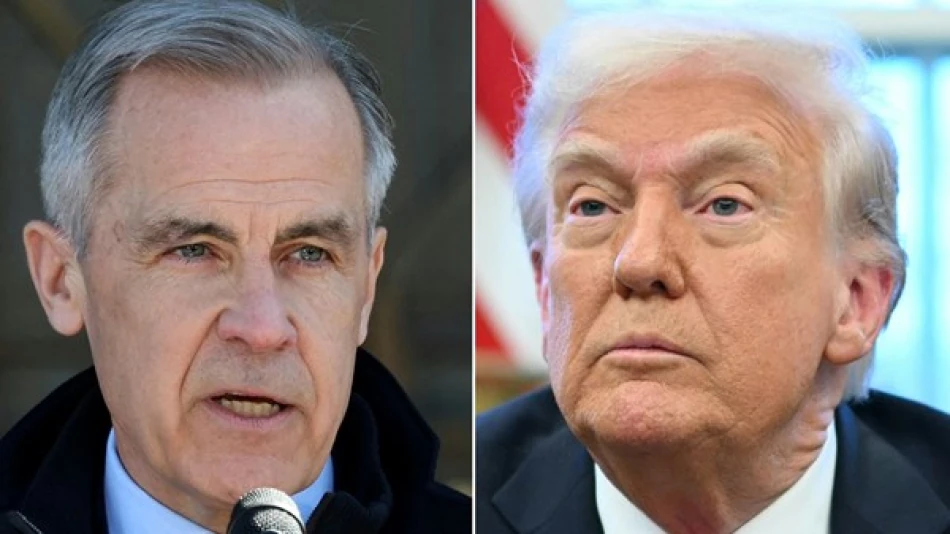
Trump and Carney Discuss Trade and Tariff Policies for Improved Economic Cooperation
Canada-US Relations Show Signs of Thaw as Leaders Resume Direct Dialogue After Trade Tensions
Canadian Prime Minister Mark Carney and US President Donald Trump held their first known conversation since June 30, marking a potential turning point in deteriorating trade relations between the North American neighbors. The call, initiated by Carney, comes as both countries grapple with escalating tariff disputes that have strained their historically close economic partnership.
Breaking the Silence: A Strategic Diplomatic Move
The timing of this outreach appears deliberate. With Canada facing a 35% tariff burden on goods not covered by the United States-Mexico-Canada Agreement (USMCA) — up from 25% following Trump's late July executive order — Carney's decision to initiate contact signals Ottawa's urgency to reset the relationship.
According to the Prime Minister's Office, the leaders engaged in a "productive and wide-ranging conversation" covering trade, tariffs, and broader geopolitical issues including the conflicts in Ukraine and Gaza. Both agreed to meet again soon, though no specific timeline was provided.
Economic Stakes and Market Implications
Trade War Escalation Threatens Integrated Economies
The 10 percentage point tariff increase represents more than symbolic friction — it threatens the deeply integrated North American supply chains that have developed over decades. For investors and businesses operating across the border, this uncertainty creates significant planning challenges and potential cost pressures.
Canada's economy, with approximately 75% of its exports destined for US markets, remains particularly vulnerable to American trade policy shifts. Key sectors including energy, lumber, and manufactured goods face immediate pressure from the enhanced tariff structure.
Broader Regional Dynamics
This trade tension occurs against a backdrop of shifting global trade relationships. While the US pursues more aggressive trade policies with traditional allies, other regions like the European Union and Asia-Pacific nations are strengthening their own trade partnerships, potentially leaving North America at a competitive disadvantage if disputes persist.
Historical Context and Precedent
US-Canada trade disputes are not unprecedented, but the current escalation represents a departure from the generally cooperative approach that has characterized the relationship since NAFTA's implementation in 1994. Previous disagreements over softwood lumber, energy, and agricultural products were typically resolved through established dispute resolution mechanisms.
The breakdown in regular communication between the leaders — evidenced by the three-month gap since their last known conversation — suggests this dispute has reached a more serious level than typical trade friction.
Looking Forward: Diplomatic Reset or Temporary Pause?
The agreement to meet again soon indicates both sides recognize the need for direct engagement to resolve their differences. However, the lack of specific commitments or timelines suggests significant work remains to bridge their positions.
For markets and businesses, this conversation represents a potential inflection point. If it leads to substantive negotiations and tariff rollbacks, it could restore confidence in North American trade stability. Conversely, if talks stall again, further escalation could force companies to accelerate supply chain diversification efforts away from cross-border integration.
The inclusion of global security issues like Ukraine and Gaza in their discussion also suggests both leaders view their relationship through a broader strategic lens, potentially creating additional leverage points for reaching economic agreements.
Most Viewed News

 Layla Al Mansoori
Layla Al Mansoori






